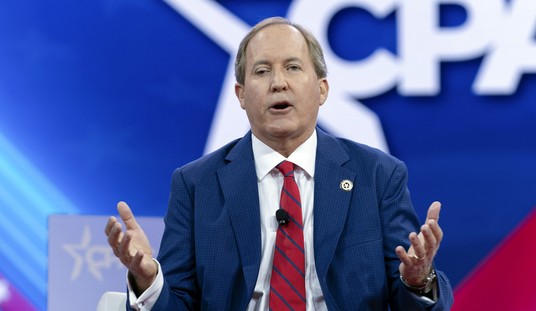If the American people voted to dismantle the “administrative state,” the new White House budget certainly delivers on the promise. The Washington Post’s analysis of the OMB proposal calls it the biggest rollback in the federal workforce since the end of World War II, and the fulfillment of a generation of GOP promises to rein in the Beltway. The real trick, though, is to see how much of this survives in the actual budget:
President Trump’s budget proposal this week would shake the federal government to its core if enacted, culling back numerous programs and expediting a historic contraction of the federal workforce.
This would be the first time the government has executed cuts of this magnitude — and all at once — since the drawdown following World War II, economists and budget analysts said.
The spending budget Trump is set to release Thursday will offer the clearest snapshot of his vision for the size and role of government. Aides say that the president sees a new Washington emerging from the budget process, one that prioritizes the military and homeland security while slashing many other areas, including housing, foreign assistance, environmental programs, public broadcasting and research. Simply put, government would be smaller and less involved in regulating life in America, with private companies and states playing a much bigger role.
Private companies won’t “regulat[e] life in America,” but states might pick up whatever slack that gets created from a Trump budget. That falls precisely in line with the Republican philosophies of federalism and subsidiarity, where governance works best when closest to the voters. Reducing the EPA’s jurisdiction necessarily means needing fewer people working at the EPA, but it doesn’t mean that individual states cannot pick up the same tasks if they see the need to do so. (Let’s hope they skip on picking up the slack on in-office porn though, as Jazz noted earlier.)
The same applies with HUD, a policy area that gets specific attention in the WaPo analysis:
Although final numbers remain in flux, his advisers have considered cutting the Department of Housing and Urban Development’s budget by $6 billion, or 14 percent, according to a preliminary budget document obtained by The Washington Post. That is a change that Trulia chief economist Ralph McLaughlin said could “put nearly 8 million Americans in both inner-city and suburban communities at risk of losing their public housing and nearly 4 million at risk of losing their rental subsidy.”
That depends on where the cuts are made, and how much can be managed afterward. But it also depends on whether state and local governments pick up the slack for themselves, too. The need for low-income housing is real, but the need to have the federal government run it is not so clear. Lyndon Johnson instituted many of these policies as part of his Great Society policies (some began in the previous decade), but the outcomes of running these programs at the federal level are murky at best. Can they be better run at the state level rather than at the federal level? Perhaps after 50 years, it’s time to try.
The theme of federalism runs through this proposal and in Damian Paletta’s analysis, although Paletta may not have grasped it. The reason that the budget “prioritizes the military and homeland security while slashing many other areas” is because the Constitution makes national security an explicit responsibility of the federal government, and grants no specific jurisdiction to the others mentioned. Since the war-economy years of World War II and the distortions caused by Wickard v Filburn and other Supreme Court cases that defined “interstate commerce” to mean practically anything, the federal government has become unmoored from its constitutional restrictions. This budget reflects the first serious attempt to return to them … at least in a budgetary sense.
This presents two problems, however. The first is that this budget is trying to attempt the impossible — balancing the budget without attempting serious entitlement reform. It won’t work, and the effort will leave off a critical aspect of a return to federalism, which is the return of resources to states along with authority. States may do a better job of handling these tasks, but the federal government still soaks up the money they’d use to do them. This budget can’t send the money back to the states if it’s trying to just achieve fiscal balance, which would force states to hike taxes and fees even more to deal with those issues.
The second problem is that it’s almost certain to fail in Congress. Republicans have promised this return to federalism for decades, but they don’t see eye to eye on the details of it, and Democrats don’t agree with it at all. Democrats will go all-out to protect their public-employee union constituencies as well as their philosophical approach to top-down governance. Trump will get some of what this budget promises, but it’s not going to be the whole enchilada. His best move in that case will be to just not spend the money, even if it’s appropriated, to cut down on federal intervention, but that could bring back earmarks in a big hurry if it steps on too many bipartisan toes.
Even so, this is still a good first step. At least these issues are finally on the table in a meaningful way, and Trump’s pugilistic approach to politics means that we’ll be discussing them seriously, even if not literally.








Join the conversation as a VIP Member